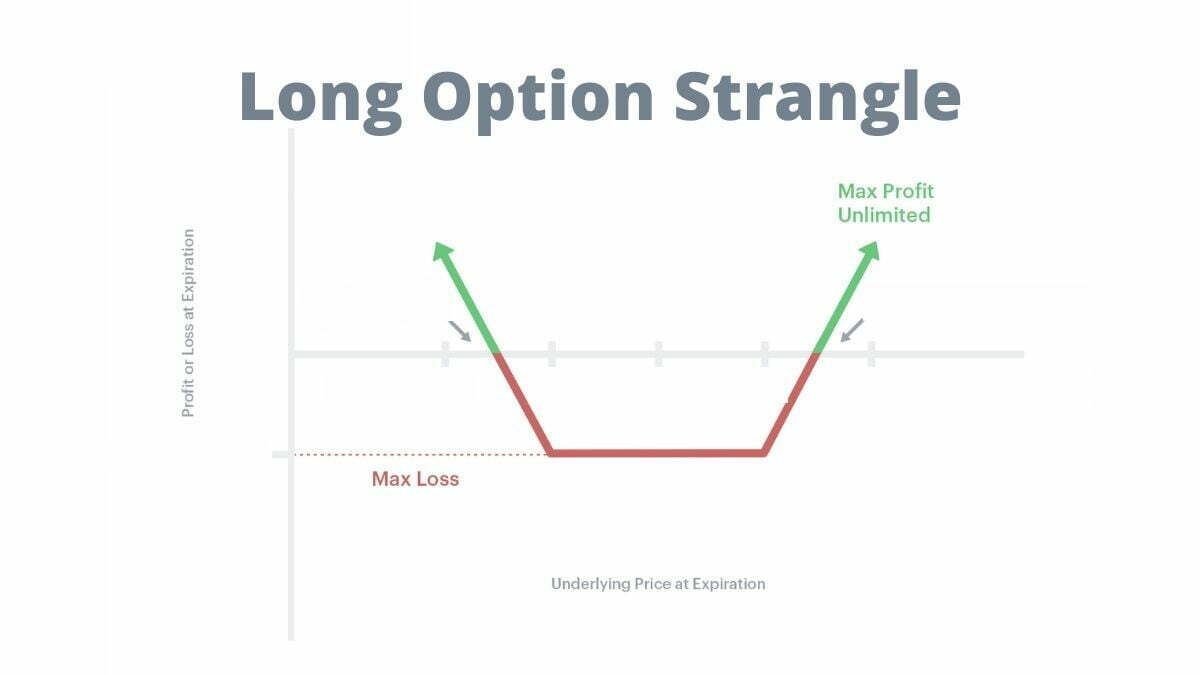Traders who are confident that the price of an underlying stock will change significantly in the near future. But Traders who are unsure of the direction of the move can trade options with different directional biases and strike prices. A long option strangle is a type of options trading. It is helpful to bet on a big move in either direction for an underlying stock.
These are option trading strategies that combine puts and calls to create positions. These strategies are profitable regardless of the direction of the market movement, only the magnitude of the move. Long strangles earn profits if the stock price moves remarkably up or down before the options expire. It generates more profits than the cost of the option premium on both sides of the play.
A long strangle
A long strangle is made up of long call options with a higher strike price and long put options with a lower strike price. It expires at the same time and on the same stock. A position like this earns profit if the stock price moves up or down well beyond the strangle’s strike prices. Long call and put options are both out-of-the-money. A strangle attempts to purchase the extrinsic value of two options in order to profit from one side having more intrinsic value at expiration than the cost of both options. These strategies have higher costs and risks than standard one-sided option plays.
Importance of Long Strangles
Long strangles can be low-risk plays during big price moves. The one side of the options will typically increase in value while the other side decreases in value.
- If one side of an option play loses value, it usually means the other side is worth more.
- You can profit from strangles even if you don’t know which way the chart will move.
- Holding an option position is less stressful when you have a hedge in place in case one of the options moves against you.
- The big risks can be transfer from the option buyer of the long strangle to the option sellers of the calls and puts.
- Strangles lose small movements but win big when there is a big movement. In their design, they are asymmetrical bets. If the price ends between both strike prices, the maximum loss is equal to both options premiums.
- The Upside profit is unlimited until the options are sold.
- If one side of the option sellers has a large move against them, you will be on the other side of their position and the trader to whom their capital flows.
- Long strangles can be played at any time of day or night.
- Long strangles have a growing delta on the winning side and a shrinking delta on the losing side.
- It is very useful for capturing trends, volatility, and reversals.
Where is the risk?
- Time is working against the strangle play. Theta value may lost while you wait for the move to happen.
- Options have a higher liquidity risk than stocks, so only trade options with tight bid-ask spreads. It costs money to enter and exit these trades by purchasing the ask and selling the bid. For maximum liquidity, prioritize front-month and close-to-the-money options.
- Long option strangle may lose value if implied volatility falls and is priced out.
- When they become profitable, they become directional bets with a high delta risk, and you must exit properly to lock in those profits.
- For profits into directional bets with high delta risk and we must exit to book profits.
- Commission costs of options are costly than stocks. We must be aware different numbers of contracts and how they can effect your P&L.
Follow Us: Instagram


